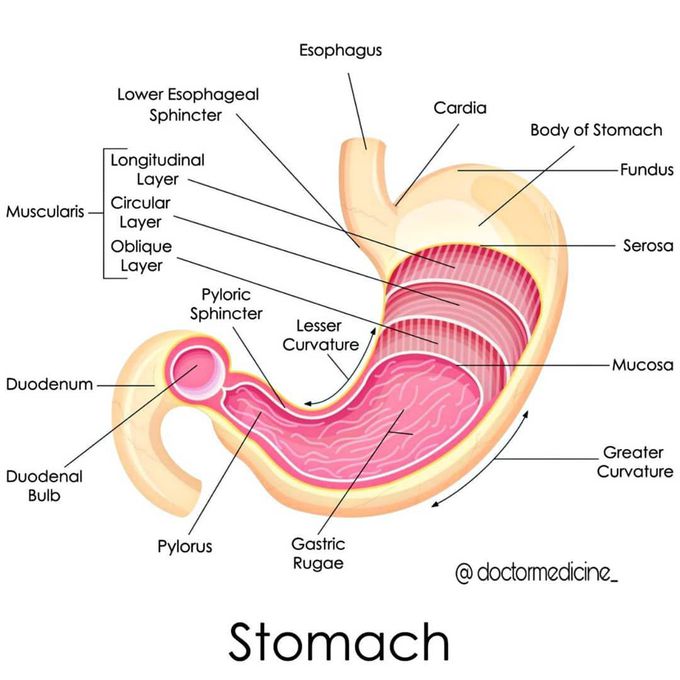


Anatomy of stomach
In classical anatomy the human stomach is divided into four sections, beginning at the cardia, each of which has different cells and functions. The cardia is where the contents of the oesophagus empty into the stomach. The fundus (from Latin, meaning 'bottom') is formed in the upper curved part. The body is the main, central region of the stomach. The pylorus (from Greek, meaning 'gatekeeper') is the lower section of the stomach that empties contents into the duodenum. The cardia is defined as the region following the "z-line" of the gastroesophageal junction, the point at which the epithelium changes from stratified squamous to columnar. Near the cardia is the lower oesophageal sphincter. Recent research has shown that the cardia is not an anatomically distinct region of the stomach but a region of the oesophageal lining damaged by reflux
Source: https://www.instagram.com/p/BpduGK4B3fi/?utm_source=ig_share_sheet&igshid=1de5ch4w6p8m0Thanks for the very clear information with the illustration.

